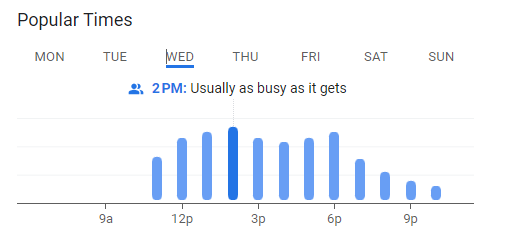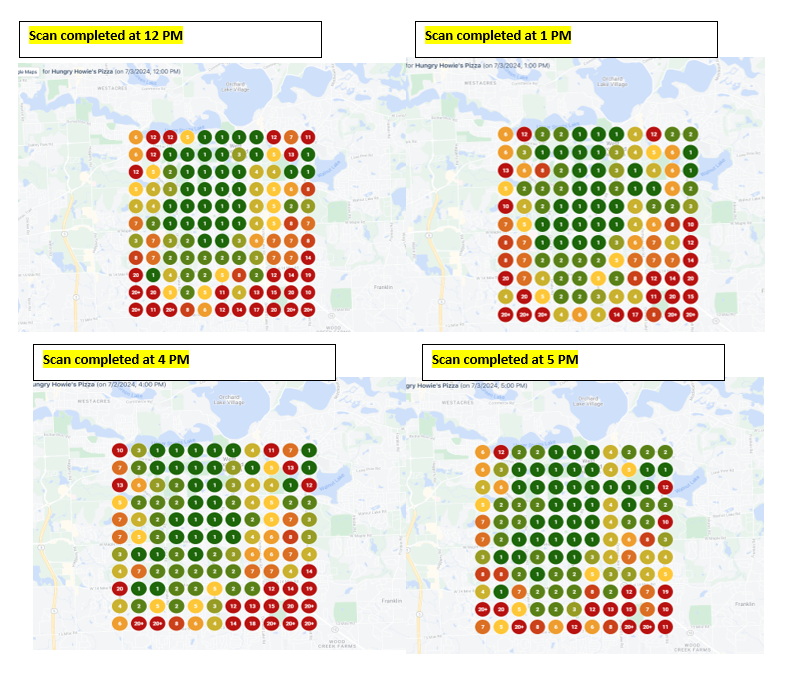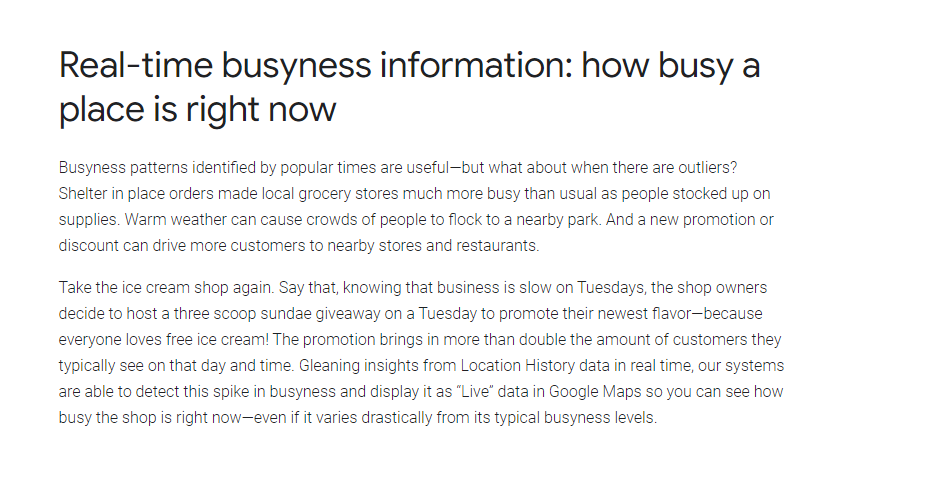In this blog, I share findings on how keyword rankings fluctuate in relation to peak activity periods found within the popular times graph. By examining real-time busyness data and its potential impact on search rankings, businesses can better understand when they might see a boost in their rankings. From timing promotions effectively to monitoring hourly keyword trends, these insights can help refine your local SEO strategy.
Real-Time Busyness: Potential for Boosting
Periods marked as “Live, Busier than usual” on Google Maps possibly correlate with a boost in search visibility. According to the Google API documents; “Time range (start time and end time)” is used to identify periods when “a LiveResult is considered “hot” and thus a potential for boosting.” The Google Api indicates a correlation between a boost in ranking and the LiveResult data. Could the LiveResult be the live data we see on the popular times graph?
Google specifically discusses how “Busyness patterns identified by popular times are useful.” They leverage the location history data in real time, allowing their systems to detect sudden spikes in activity and display it as “Live” on Google Maps.
Timing is Everything: How Peak Hours Impact Keyword Rankings
By running hourly keyword scans, you may notice a trend of improved rankings before peak hours. It is important to note that hourly trends in keyword rankings identified in this article are potentially just one of many ranking factors. For instance, a business can still rank well even during closed hours, and a less busy business can still achieve high rankings. Let’s consider the keyword “pizza takeout.”
All scans were performed at various hours on a Wednesday. According to the popular times graph displayed, Hungry Howie’s peaks at 2 PM and 6 PM.

The following ranking reports shows an increase in ranking from 12 PM to 1 PM and again from 4 PM to 5 PM. As the business approaches peak times, the rankings start to trend upward. Monitoring keyword rankings in relation to popular times can provide valuable insights for your local SEO strategy and reporting efforts. You can find more examples in my recent blog, Menu Items and Google’s Popular Times Graph Can Boost Your Local SEO Ranking.

Key Takeaways for Leveraging Popular Times Graph on Google Maps
- Monitor Hourly Trends: Regularly analyze the popular times graph on your Google Maps profile to identify peak activity periods. Understanding these trends can help you plan and execute strategies that align with your business’s busiest times.
- Leverage Real-Time Data: Recognize that live data indicating your business is “busier than usual” can be a signal for a potential ranking boost.
- Run Targeted Promotions: Schedule promotions and special events during identified slow periods to drive more customer traffic. This increase in activity can lead to improved visibility and higher keyword rankings.
- Track Keyword Rankings Hourly: Conduct hourly keyword scans to observe trends in your rankings, especially before peak hours.
- Understand Multiple Ranking Factors: Recognize that while popular times data can influence rankings, it is just one of many factors. A business can still rank well outside of peak hours or even when it appears less busy compared to competitors.
- Optimize Based on Insights: Use the insights gained from monitoring popular times data and keyword trends to continuously refine your local SEO strategy.
Reputation Arm can help you optimize your Google Business Profile, leading to enhanced rankings, contact us for professional SEO help. Follow me on X for continued ranking insights.

